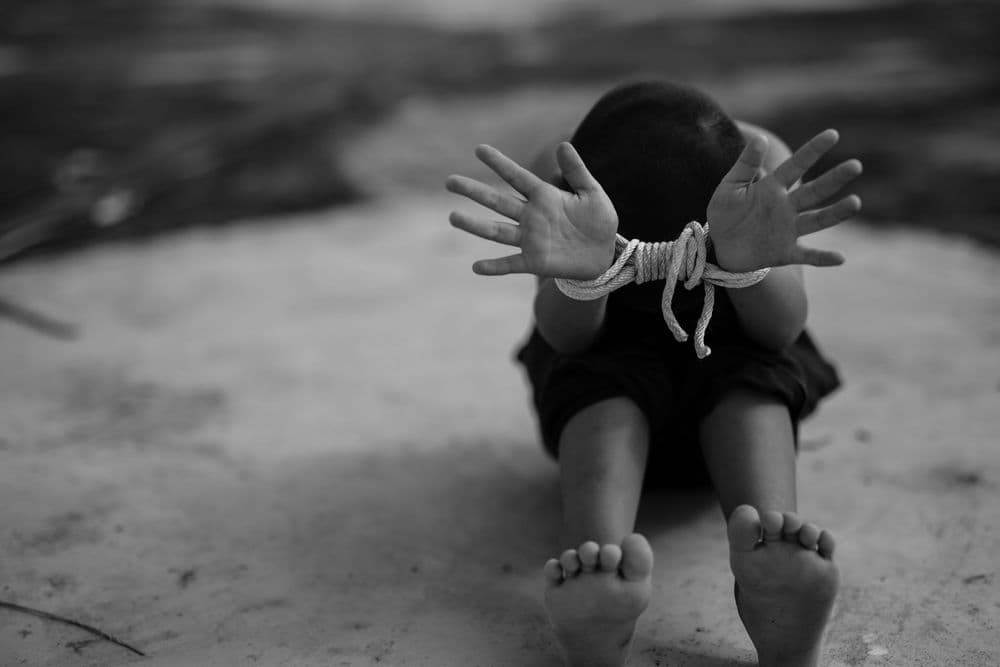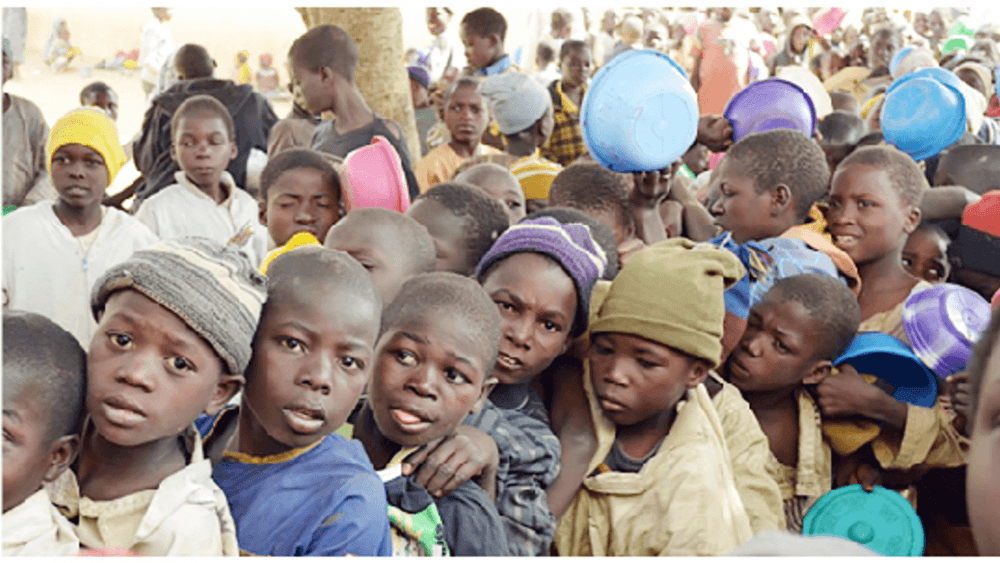Stay Informed
Join our newsletter to receive updates about our mission, impact stories, and ways you can help make a difference.

Child trafficking doesn't announce itself with violence or force. It begins quietly with a friendly message, a job offer, or a promise of something better. In cities and small towns alike, child trafficking operates through an invisible web that stretches across borders and screens. This multi-billion-dollar crime doesn't resemble the dramatic abductions we see in movies. Instead, it hides behind trusted faces, false promises, and everyday transactions. According to the United Nations Office on Drugs and Crime, nearly one in three trafficking victims worldwide is a child, and the majority are exploited without ever crossing a border.
Recruitment rarely begins with violence. Traffickers systematically exploit vulnerability, targeting children facing poverty, family conflict, or isolation those most desperate for connection or opportunity. Recruiters pose as friends, mentors, employers, or romantic interests. Online platforms like social media, gaming sites, messaging apps have become primary hunting grounds. Traffickers invest time building trust through flattery, attention, and small gifts before isolating victims from family and encouraging secrecy. Offline, they operate through fake job agencies, informal labor networks, or community members paid to identify vulnerable targets.
The tragic case of Amanda Todd illustrates how predators operate online. In 2012, the 15-year-old Canadian student died by suicide after a predator convinced her to expose herself on webcam when she was just twelve years old, then stalked and blackmailed her for years using the images. Her tormentor, Aydin Coban, was eventually sentenced to 13 years in prison in 2022, demonstrating how digital exploitation can span years and borders.
Elizabeth Frazier's case reveals another disturbing pattern: she was first trafficked by her own parents when she was just four years old, and the exploitation continued until she was 23. Data from the Counter-Trafficking Data Collaborative shows that almost half of identified child trafficking cases begin with some family member involvement, up to four times higher than in adult trafficking cases.
Contrary to popular belief, trafficking rarely involves smuggling across borders in the dead of night. Many victims are exploited within their own neighborhoods. When relocation occurs, it masquerades as legitimate opportunity a new job, educational program, or family visit.
In one documented case, agents rescued 82 children from a trafficking ring that had brought them from the Dominican Republic to the United States illegally. In another Atlanta-based operation, defendants used violence, threats, and intimidation to coerce victims into commercial sex acts across Georgia and Alabama.
Traffickers use ordinary transportation ride-shares, trains, buses. They equip victims with forged documents or pose as guardians. Because initial movement often feels voluntary, driven by promises of opportunity, victims don't realize they're being trafficked until they're already trapped, isolated, and dependent on their exploiters for basic needs.
As stated above, physical force is less common than psychological manipulation. Traffickers wield fear, shame, manufactured debt, and dependency as their primary weapons. Victims are told they owe thousands for travel or lodging, that police will arrest them as criminals if they flee, or that family members will be harmed if they speak out.
In a 2017 Georgia case, eight women were found held captive in a luxury home. The suspect, Kenndric Roberts, faced charges including false imprisonment and trafficking persons for labor. In another Atlanta case, a trafficker who committed violent sexual acts against his victims, bound them with duct tape, and took their identification to hold them captive was sentenced to life in federal prison.
Some traffickers create drug or alcohol dependency to ensure compliance. Others monitor phones, track locations via GPS, and threaten to release private photos or videos. One Atlanta sex trafficker was charged with witness tampering after continuing to harass and intimidate victims even after being indicted. This psychological warfare makes victims appear "consenting" to observers one of the greatest obstacles to detection and rescue.
Technology has transformed trafficking from a street-level crime into a sophisticated digital operation. Traffickers use encrypted apps and private forums to trade children, accepting payment in cryptocurrency to avoid detection.
In 2024, an FBI-led operation called "Operation Cross Country" located 59 minor victims of child sex trafficking and sexual exploitation, and another 59 children who had been reported missing. These coordinated sweeps demonstrate both the scale of digital exploitation and law enforcement's evolving response.
Artificial intelligence now complicates the fight further. Deepfake technology enables traffickers to forge identities and create false content, while sophisticated algorithms help them identify vulnerable targets. However, law enforcement is fighting back with AI-driven detection tools that flag grooming behaviors and illegal content before exploitation occurs.
Trafficking hides within normal routines, but patterns of behavior can reveal the truth. Warning signs include children who suddenly possess expensive items without explanation, appear fearful or overly submissive to specific adults, or avoid eye contact and seem chronically exhausted. They may lack access to their own identification, travel frequently with unrelated adults who answer questions for them, or receive gifts from online strangers who request private photos.
Children at higher risk include homeless and runaway minors, those in foster care and juvenile justice systems, children in impoverished communities with strong gang or drug presence, unaccompanied and undocumented minors, and minors whose online presence is unsupervised by adults.
Combating child trafficking requires collective action. Organizations like ECPAT International, UNICEF, and the National Human Trafficking Hotline coordinate rescue efforts and survivor support across borders. Tech companies are implementing stronger safeguards, using machine learning to detect and remove exploitative content.
For individuals, awareness and education are powerful tools. Teaching children about online safety, privacy, and manipulation tactics reduces vulnerability. Reporting suspicious behavior especially grooming attempts online can prevent exploitation before it begins.
Child trafficking thrives in silence and secrecy. Every person who learns to recognize the warning signs and speaks up helps dismantle this invisible web. The networks sustaining this crime are complex, but shining light on their methods is the essential first step toward ending them.
Amanda Todd Legacy Society. (n.d.). Home. https://www.amandatoddlegacy.org
CBC News. (2022, October 14). Aydin Coban sentenced to 13 years for sexual extortion of Amanda Todd. https://www.cbc.ca/news/canada/british-columbia/aydin-coban-sentencing-october-14-1.6616874
Counter-Trafficking Data Collaborative. (n.d.). Home. https://www.ctdatacollaborative.org
Federal Bureau of Investigation. (n.d.). Operation Cross Country. https://www.fbi.gov/news/stories/operation-cross-country
International Organization for Migration. (2018, July 30). Family members linked to nearly half of child trafficking: New IOM-Polaris data. https://www.iom.int/news/family-members-linked-nearly-half-child-trafficking-new-iom-polaris-data
United Nations Office on Drugs and Crime. (n.d.). Global Report on Trafficking in Persons. https://www.unodc.org/unodc/data-and-analysis/glotip.html
U.S. Department of Justice. (2024, July 24). Operation Cross Country XIII leads to identification/location of adolescent victims. https://www.justice.gov/archives/opa/pr/operation-cross-country-xiii-leads-identificationlocation-adolescent-victims
Additional Resources
National Human Trafficking Hotline: 1-888-373-7888 (24/7, confidential, 200+ languages)
Text: 233733
Web chat: https://humantraffickinghotline.org/en/chat
National Center for Missing & Exploited Children (NCMEC): 1-800-843-5678
CyberTipline for online exploitation: https://www.cybertipline.org
Organizations Working to Combat Child Trafficking:
ECPAT International: https://www.ecpat.org
UNICEF Child Protection: https://www.unicef.org/protection/child-trafficking
Polaris Project: https://polarisproject.org
International Justice Mission: https://www.ijm.org
Data and Research:
UNODC Global Report on Trafficking in Persons: https://www.unodc.org/unodc/data-and-analysis/glotip.html
Counter-Trafficking Data Collaborative: https://www.ctdatacollaborative.org
U.S. Department of State Trafficking in Persons Report: https://www.state.gov/trafficking-in-persons-report/
Learn More About Online Safety:
FBI's Resources for Parents: https://www.fbi.gov/how-we-can-help-you/safety-resources/sex-crimes
National Center for Missing & Exploited Children: https://www.missingkids.org/netsmartz

Hotlines serve as a pivotal resource for individuals seeking immediate assistance across various sectors. Their effectiveness hinges on accessibility, trained personnel, and efficient call management systems

Treating adults like adults is a reasonable principle but not when the tool in question is a machine that can generate infinite child sexual abuse material on demand. OpenAI and every other AI company must understand: loosening restrictions on sexual content without ironclad safeguards is reckless.

the ethics surrounding the surveying of child abuse necessitate a careful balance between the need for data collection and the imperative of safeguarding vulnerable populations. Ethical considerations must prioritize the well-being of children, ensuring that their rights and dignity are upheld throughout the research process.


The intersection of technology and social justice has never been more critical. As AI continues to evolve, its capabilities in detecting and combating smuggling and human trafficking will further strengthen law enforcement and humanitarian efforts.

The Almajiri system began as a noble path of learning but has been weakened by neglect and lack of support. Today, millions of children suffer under conditions that deny them their rights and their futures


tackling child abuse in South Africa requires a multifaceted approach that involves individuals, families, communities, and the government. It calls for increased awareness, education, and active participation from all sectors of society.

The fight against child labor in Europe began in earnest during the 19th century. Social reformers, writers, and activists highlighted the plight of children working in hazardous conditions

Child sexual exploitation can be prevented through education, vigilance, and strong legal action. Key steps include teaching children body safety, monitoring online activity, reporting abuse, and supporting survivors. Community awareness and trained professionals are essential to detect and stop exploitation early.

Online gaming platforms have become a significant avenue for child sexual exploitation, with predators using in-game communication features, virtual gifts, and mentorship tactics to groom children in as little as 19 seconds, making parental awareness and active engagement in gaming crucial for protection.

Marianco is a non-profit organization dedicated to combating child trafficking, pedophilia, and exploitation. Inspired by Francisco Padilla, a former street orphan, Marianco provides comprehensive support to vulnerable children, including shelter, education, healthcare, and counseling. The organization aims to create a world where every child is safe and has the opportunity to reach their full potential. Child trafficking, pedophilia, and related forms of exploitation are pressing issues that strip millions of children of their rights, safety, and dignity. Marianco recognizes the urgency of addressing this crisis and is committed to disrupting cycles of exploitation by raising awareness, advocating for stricter laws, and creating prevention and rehabilitation programs. Their short-term goals include raising awareness, building partnerships, fundraising, developing rehabilitation centers, offering legal aid, and creating educational programs. Marianco is preparing to launch an advocacy campaign to educate communities about child trafficking and how to prevent it. With your support, Marianco can turn these plans into reality and create a world where children are safe, loved, and empowered.
Join our newsletter to receive updates about our mission, impact stories, and ways you can help make a difference.